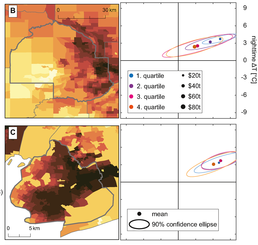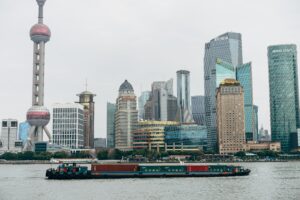Remotely sensed land surface temperature measurements are used to explore the distribution of the United States’ urban heating burden. Drawing on urban temperature anomalies during extreme summer surface temperature events from all 1,056 US counties with more than 10 developed census tracts, we find that the poorest tracts (and those with lowest average education levels) within a county are significantly hotter than the richest (and more educated) neighborhoods for 76% of these counties (54% for education); we also find that neighborhoods with higher Black, Hispanic, and Asian population shares are hotter than the more White, non-Hispanic areas in each county.

Widespread Race and Class Disparities in Surface Urban Heat Extremes Across the United States
You Might Also Like

Course Correction: Toward an effective and Sustainable China Policy

How can diverse national food and land-use priorities be reconciled with global sustainability targets? Lessons from the FABLE initiative


